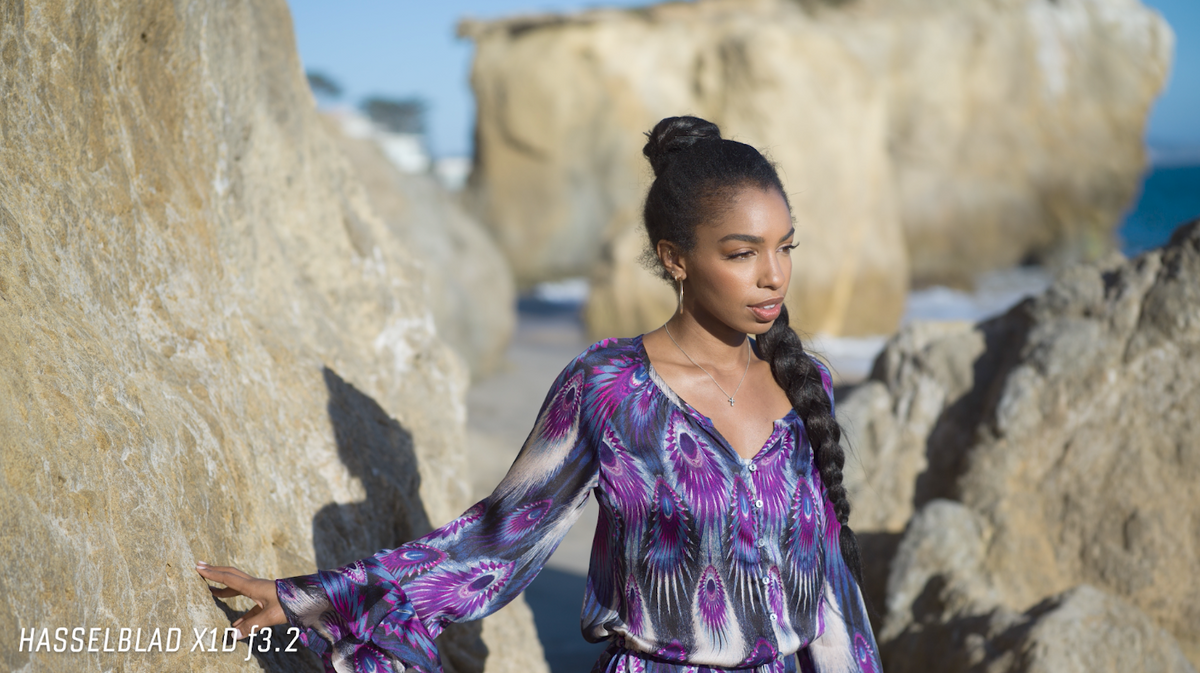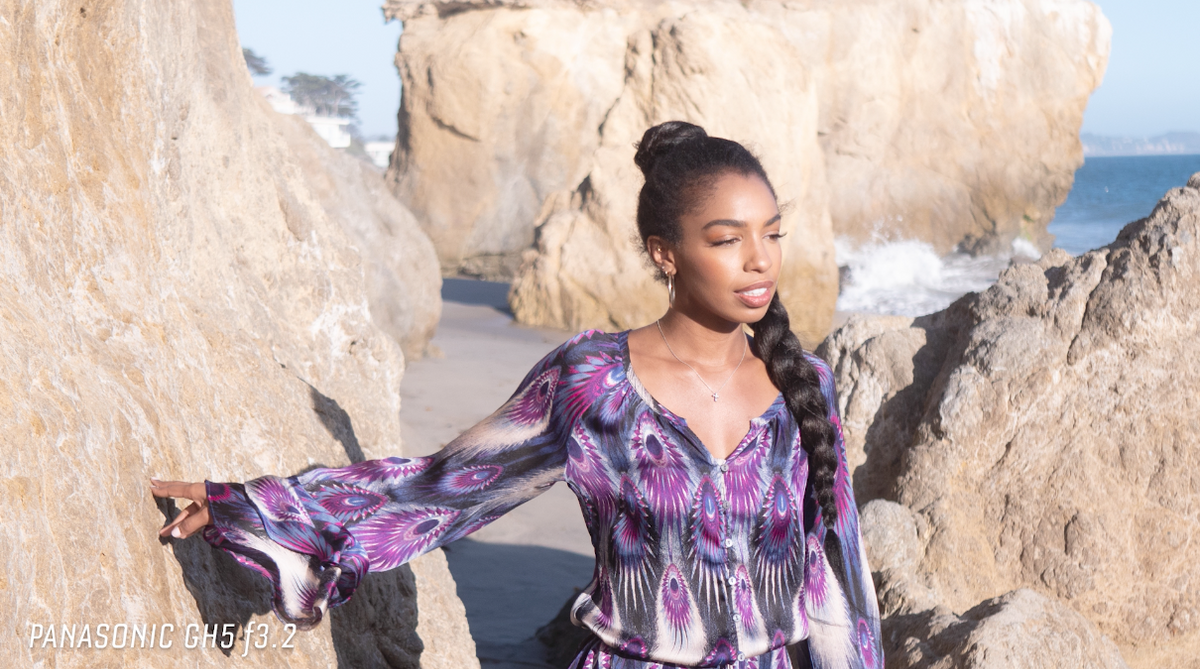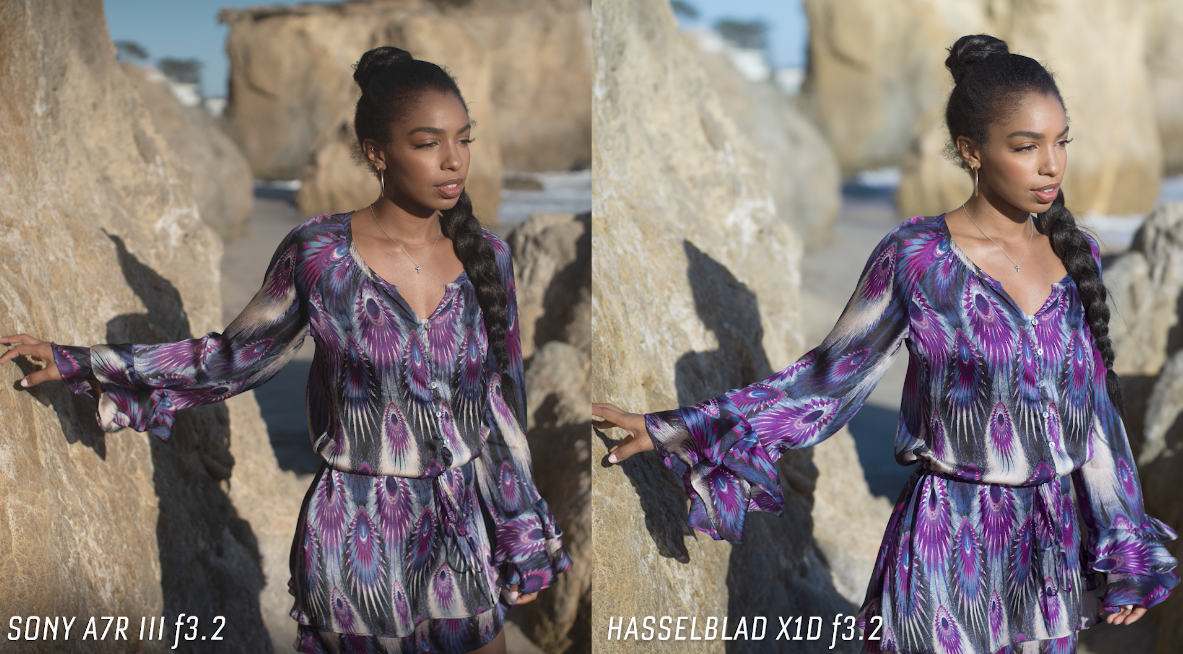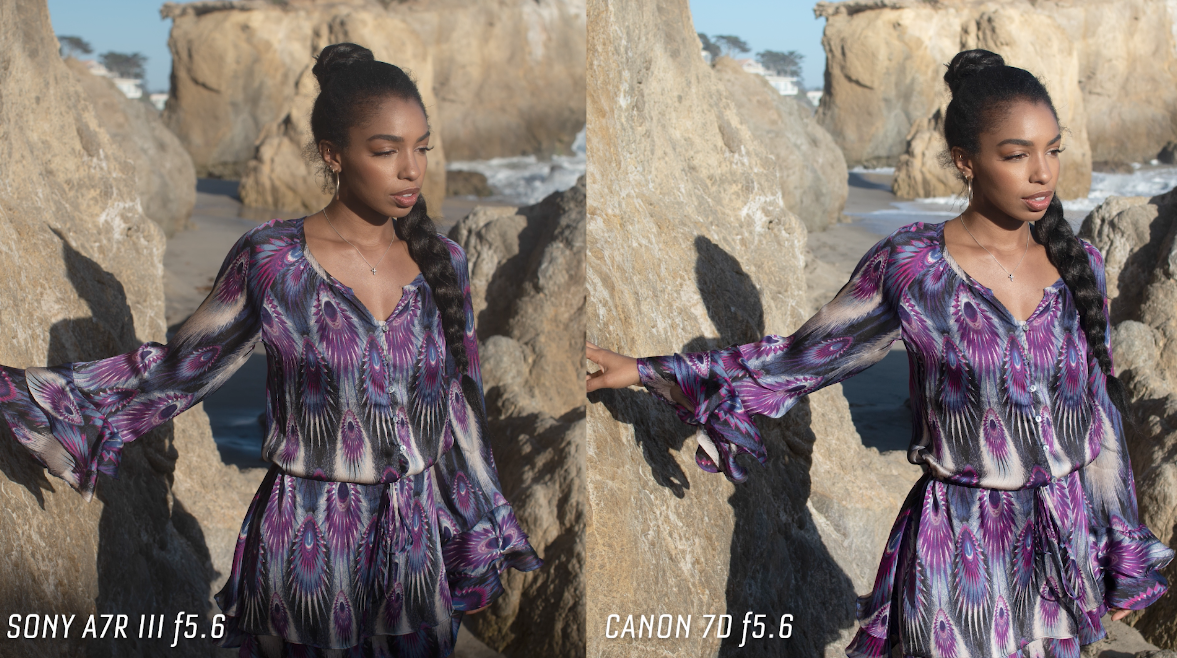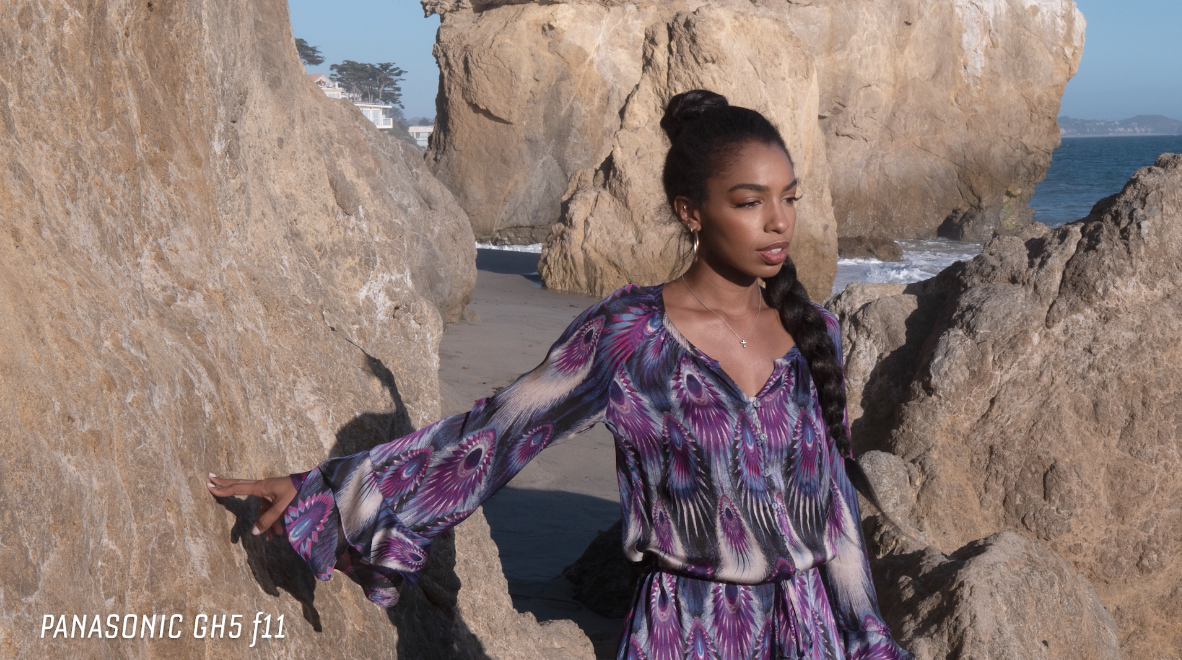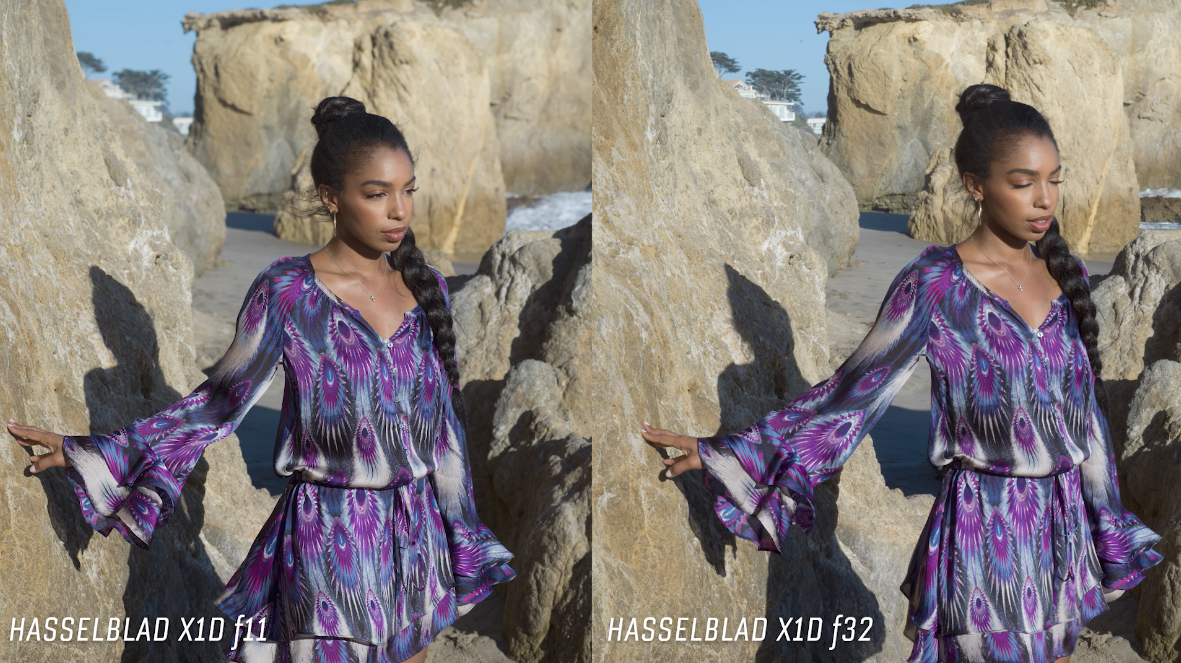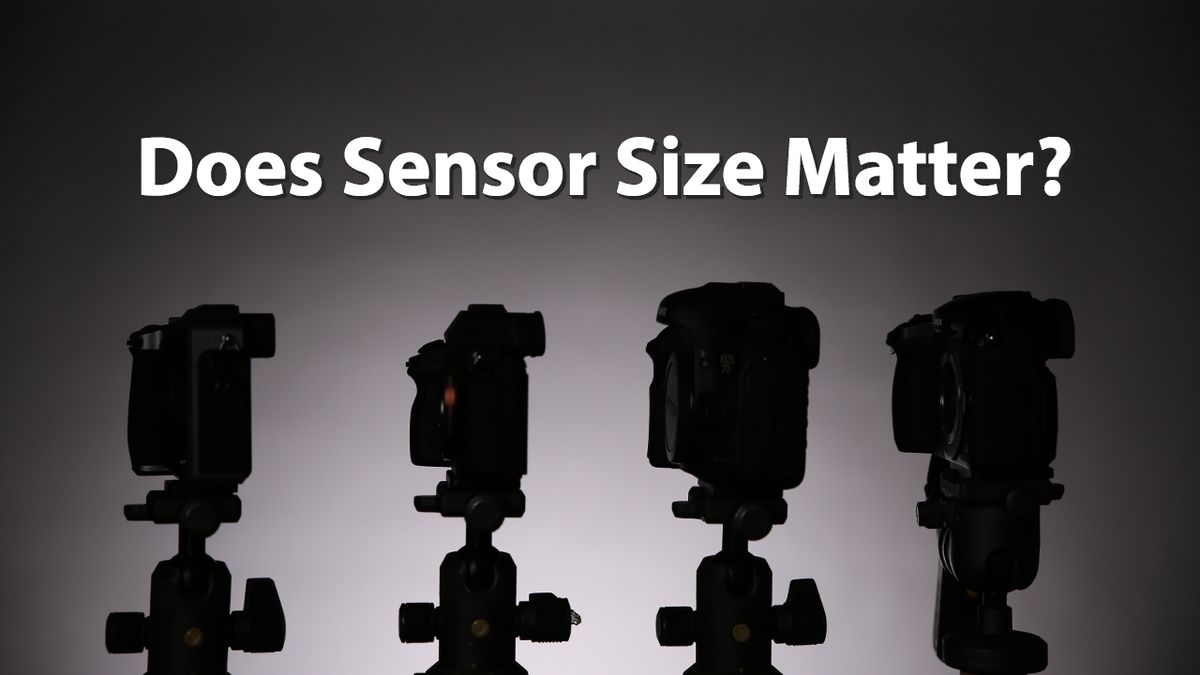 Hi, this is Jay P. Morgan and Kenneth Merrill. Our model for today is Lezl Gonzales (@lezlkoe)! We are going to be taking a look at four different sensor sizes and see how they compare with one another.
Hi, this is Jay P. Morgan and Kenneth Merrill. Our model for today is Lezl Gonzales (@lezlkoe)! We are going to be taking a look at four different sensor sizes and see how they compare with one another.
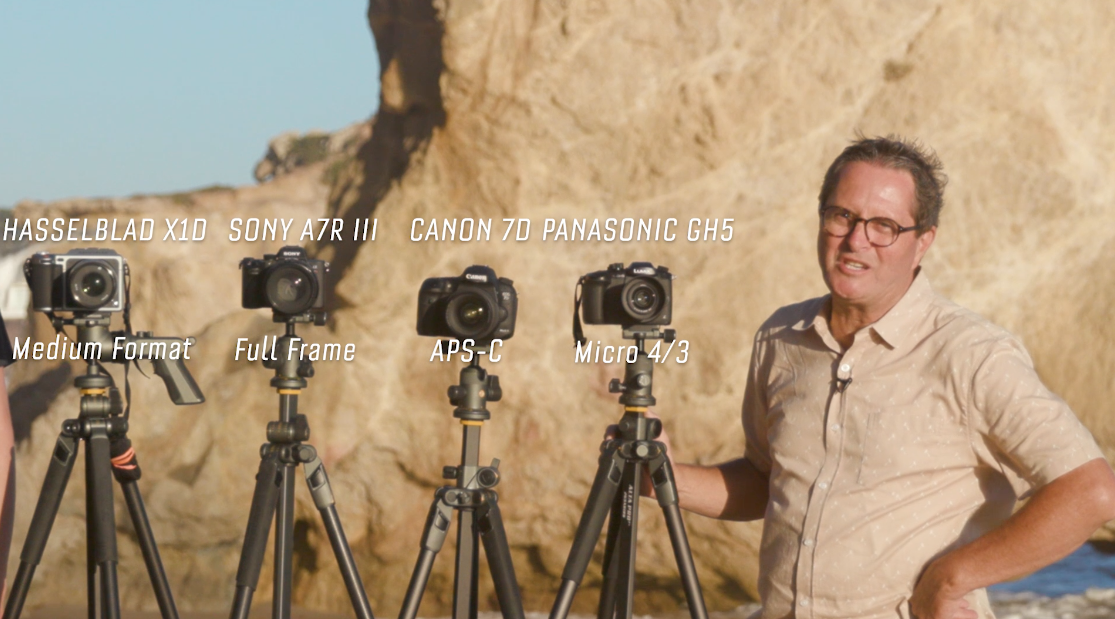 First, we have the Hasselblad X1D, which is a Medium format camera, it’s the largest digital sensor on the market right now. Sony A7R3 is a full-frame camera, Canon 7D with a cropped APS-C and the Panasonic GH5 Micro 4/3. We are going to take a look at how they match up to each other in regards to depth of field, image quality, and grain structure. We’ll see what we find out!
First, we have the Hasselblad X1D, which is a Medium format camera, it’s the largest digital sensor on the market right now. Sony A7R3 is a full-frame camera, Canon 7D with a cropped APS-C and the Panasonic GH5 Micro 4/3. We are going to take a look at how they match up to each other in regards to depth of field, image quality, and grain structure. We’ll see what we find out!
Focus & Depth of Field Test
F3.2 on the Hasselblad
Starting with the lowest aperture is the Hasselblad with f3.2 The background falls away super quickly, less than a 2.8 on a full frame camera. A really nice shallow depth of field.
GH5
If you look at the GH5, the image is a little bit overexposed. But taking a look at the depth of field, the background is still incredibly sharp.
Canon 7D and the Sony
I would say that the difference between these two cameras is the least between all the cameras. The Hasselblad to the Sony still feels very dramatic, but Sony in comparison to the 7D is comparable.
 F4.0
F4.0
When we go to 4.0 on all the cameras it doesn’t change that drastically.
F5.6
At F5.6, which is optimal to shoot, the 7D is looking very similar to the Sony. What I like on the Hasselblad you can shoot on the optimal sharpness and level of the camera, and still get a really nice shallow depth of field. In contrast, with the Sony, you aren’t seeing as much of that clarity.
F11
On the GH5, the background is incredibly sharp. It’s sharp all the way down the coast of California, I can almost see Chile! With the Hasselblad, we still have some depth of field.
F32
You have to go all the way to 32 in order for the Hasselblad to finally be in focus in the background.
What Is the Equivalent Depth of Field
Using the photos, we created a visual measurement to compare the depth of field of all four cameras at different f-stops. Panasonic GH5 at F3.2 = SONY A7R3 at F8.0 = Canon 7D at F5.6 = Hasselblad at F16
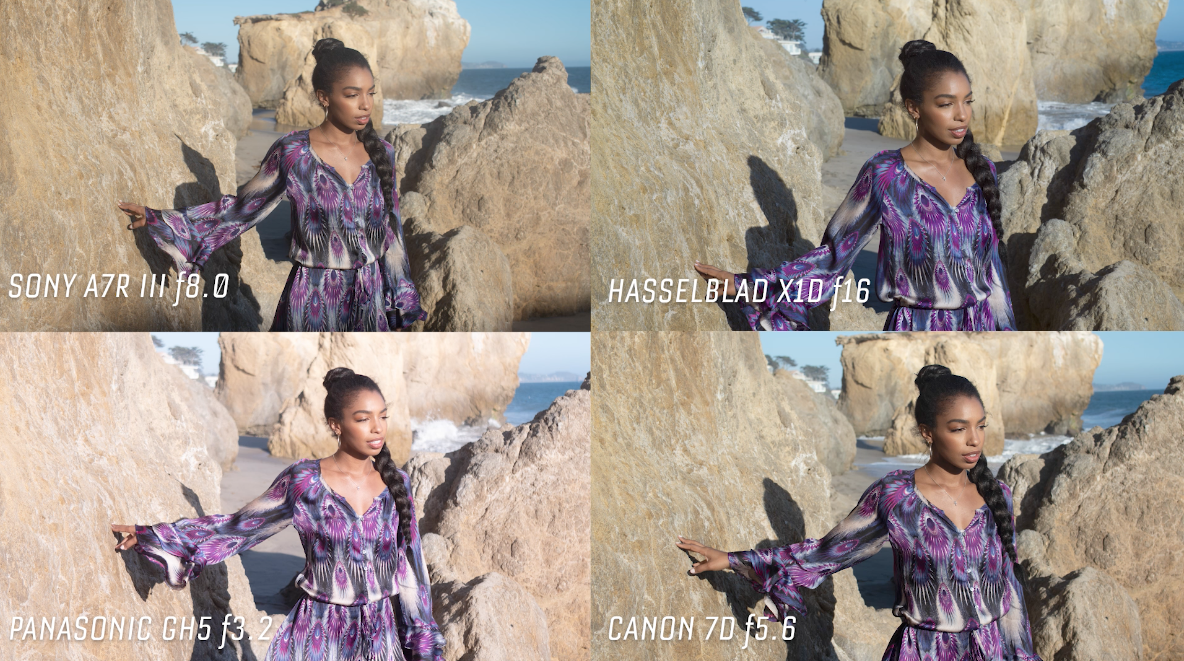 You are looking at more than a 4-stop difference in terms of achieving the same depth of field. What’s interesting is that the Hasselblad can’t give you the depth of focus that the GH5 can give, but the GH5 can’t give you the shallow depth of field.
You are looking at more than a 4-stop difference in terms of achieving the same depth of field. What’s interesting is that the Hasselblad can’t give you the depth of focus that the GH5 can give, but the GH5 can’t give you the shallow depth of field.
The Hasselblad isn’t as flexible as a full-frame sensor. In comparison, the Sony can achieve both shallow depth of field and a focused depth of field with lessening the quality of the image.
Comparing Shallow Depth of Field
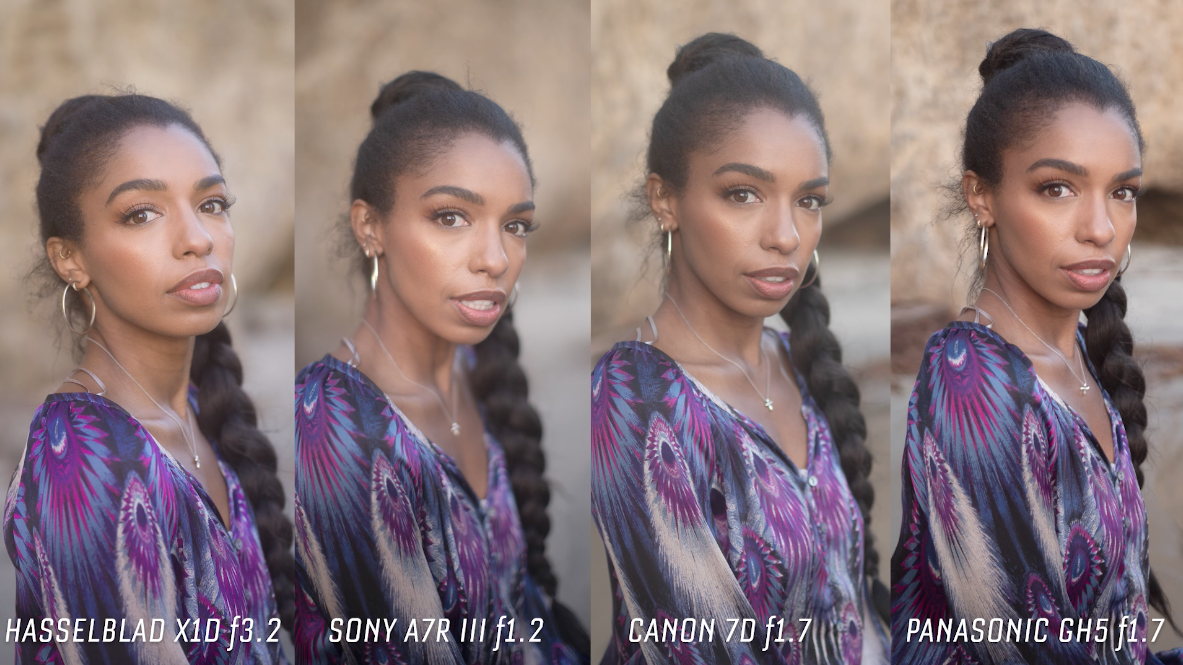 With the GH5 at 1.7, we are achieving a shallow depth of field here, that’s a workable portrait. The Canon 7D is a lot shallower at the same f-stop.
With the GH5 at 1.7, we are achieving a shallow depth of field here, that’s a workable portrait. The Canon 7D is a lot shallower at the same f-stop.
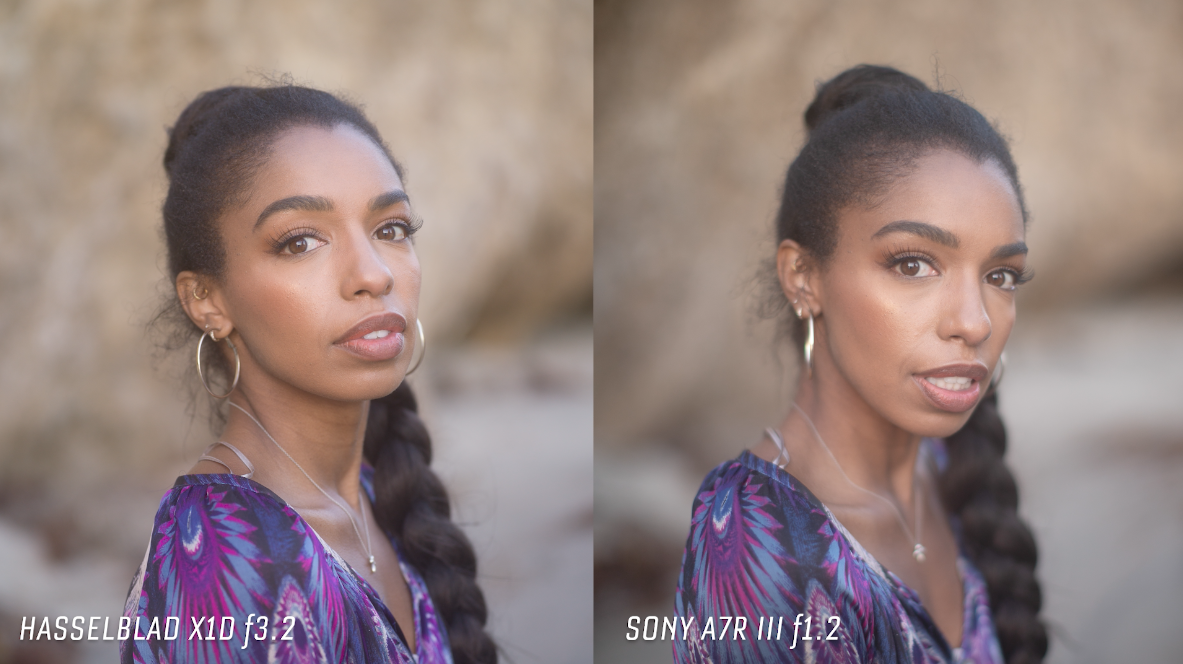 Once we take a look at the A7R3 the background is completely blurred. Even the Hasselblad at 3.2 isn’t as shallow of a focus as the A7R3. The Hasselblad 3.2 still isn’t as shallow as the Sony at 1.2. The Hasselblad struggles to give you depth. The GH5 struggles to give you depth but gives you shallowness. The A7R3 and the Canon7D are more of in the middle giving you a little bit of both. The A7R3 is giving you more on each end.
Once we take a look at the A7R3 the background is completely blurred. Even the Hasselblad at 3.2 isn’t as shallow of a focus as the A7R3. The Hasselblad 3.2 still isn’t as shallow as the Sony at 1.2. The Hasselblad struggles to give you depth. The GH5 struggles to give you depth but gives you shallowness. The A7R3 and the Canon7D are more of in the middle giving you a little bit of both. The A7R3 is giving you more on each end.
Sensor Size
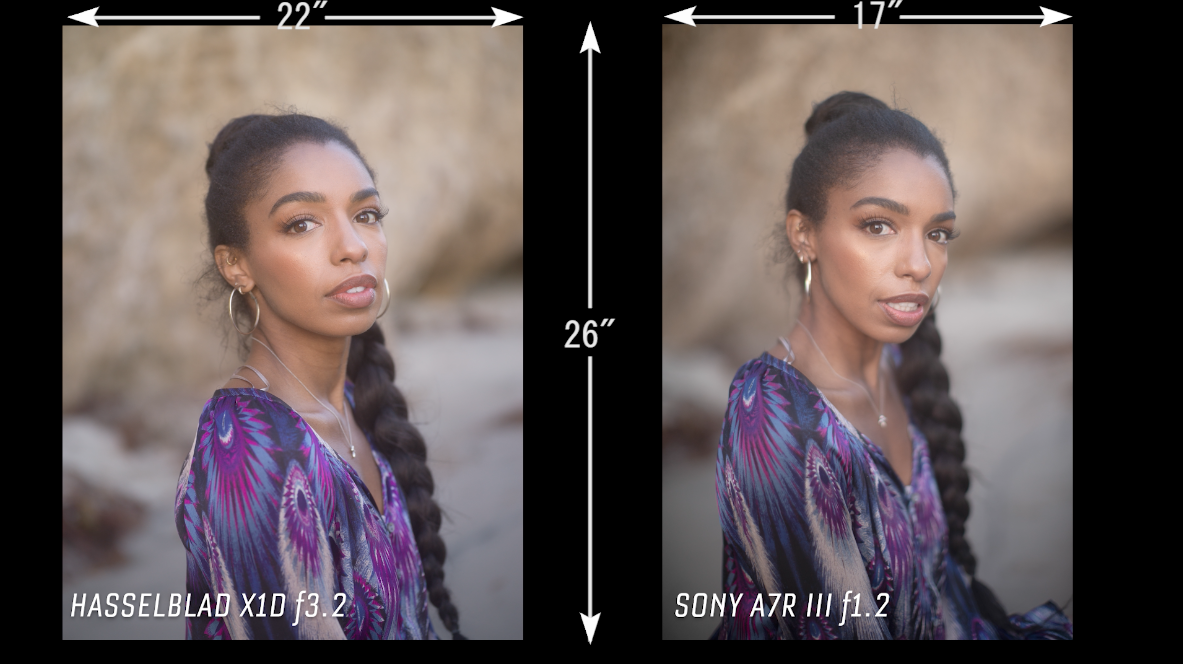 The A7R3 is a 42.0 Megapixel camera, where the Hasselblad is a 50.0, so it edges out a bit on photo quality. When we blew it up to 300 DPI, the Hasselblad gave us 22in vs. Sony only gave us 17in wide. This really made me realize that the full-frame camera is the most flexible tool. You can shoot at f22 and have everything in focus and shoot at f1.2 and get a really nice shallow depth of field. The A7R3 becomes a compromise because the megapixel is a bit lower, but it still gives you a nicer depth of field of its large sensor. It’s in between the 7D and the Hasselblad in terms of sensor sizes and quality.
The A7R3 is a 42.0 Megapixel camera, where the Hasselblad is a 50.0, so it edges out a bit on photo quality. When we blew it up to 300 DPI, the Hasselblad gave us 22in vs. Sony only gave us 17in wide. This really made me realize that the full-frame camera is the most flexible tool. You can shoot at f22 and have everything in focus and shoot at f1.2 and get a really nice shallow depth of field. The A7R3 becomes a compromise because the megapixel is a bit lower, but it still gives you a nicer depth of field of its large sensor. It’s in between the 7D and the Hasselblad in terms of sensor sizes and quality.
Low Noise Light Structure
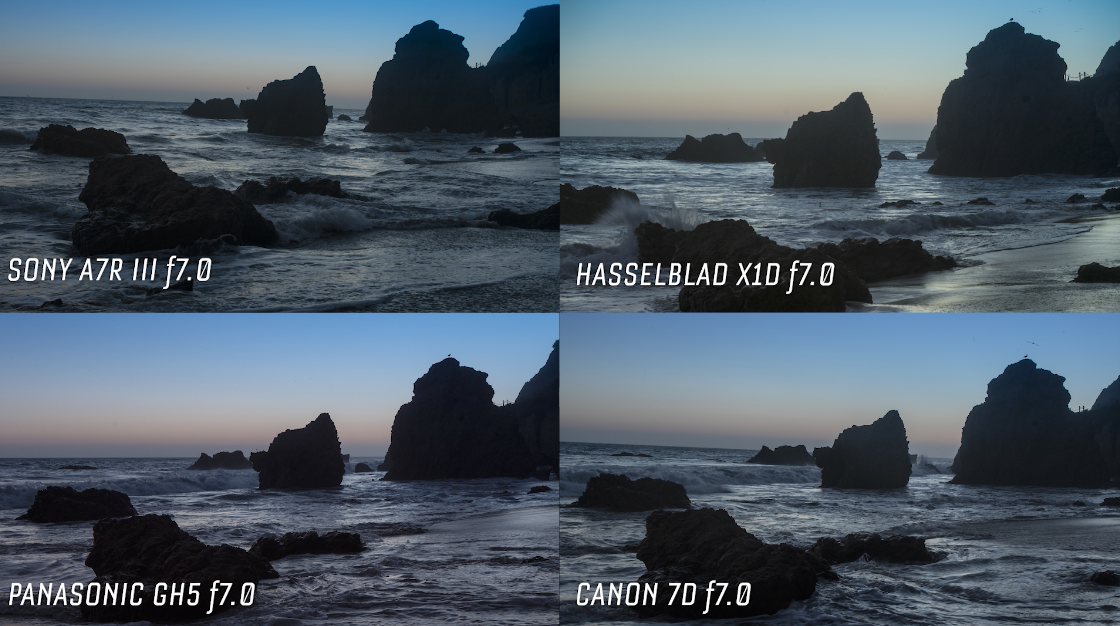 We took this shot really late in the day. There is a good amount of depth of field on all the cameras with the Hasselblad being the least shallow. Looking at all the images we have here, the small sensor on the GH5 stands out because it’s so grainy. The A7R3 and Hasselblad look the same in terms of the noise structure.
We took this shot really late in the day. There is a good amount of depth of field on all the cameras with the Hasselblad being the least shallow. Looking at all the images we have here, the small sensor on the GH5 stands out because it’s so grainy. The A7R3 and Hasselblad look the same in terms of the noise structure.
ISO 1600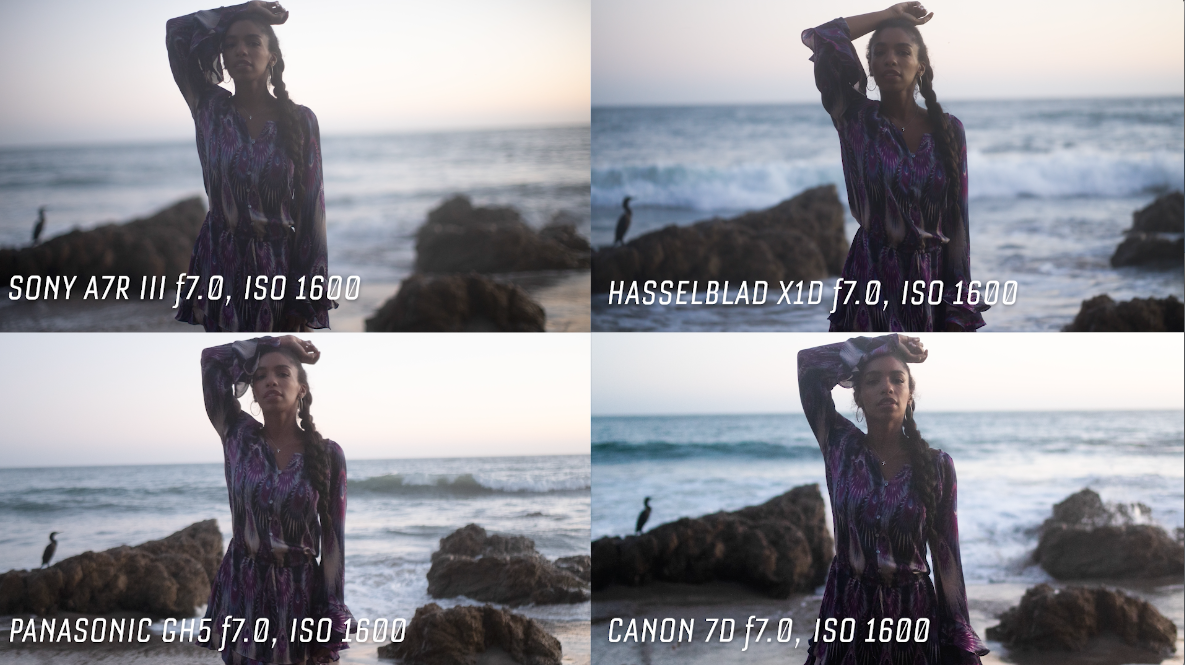 All of them are really struggling, you look at the 7D and the GH5, and they are super noisy and gritty.
All of them are really struggling, you look at the 7D and the GH5, and they are super noisy and gritty.
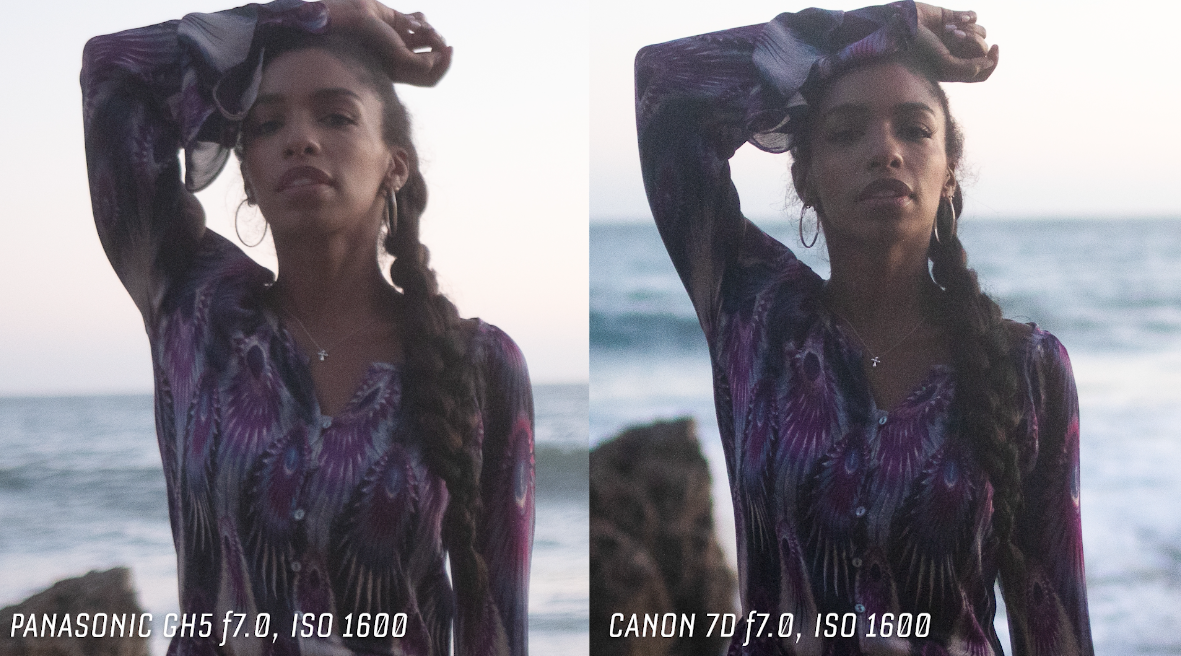 You can see the grain popping out on the 7D more than the GH5. The Hasselblad is pretty smooth, leaving the Sony behind in the dust a little in terms of image quality.
You can see the grain popping out on the 7D more than the GH5. The Hasselblad is pretty smooth, leaving the Sony behind in the dust a little in terms of image quality.
Does Sensor Size Matter?
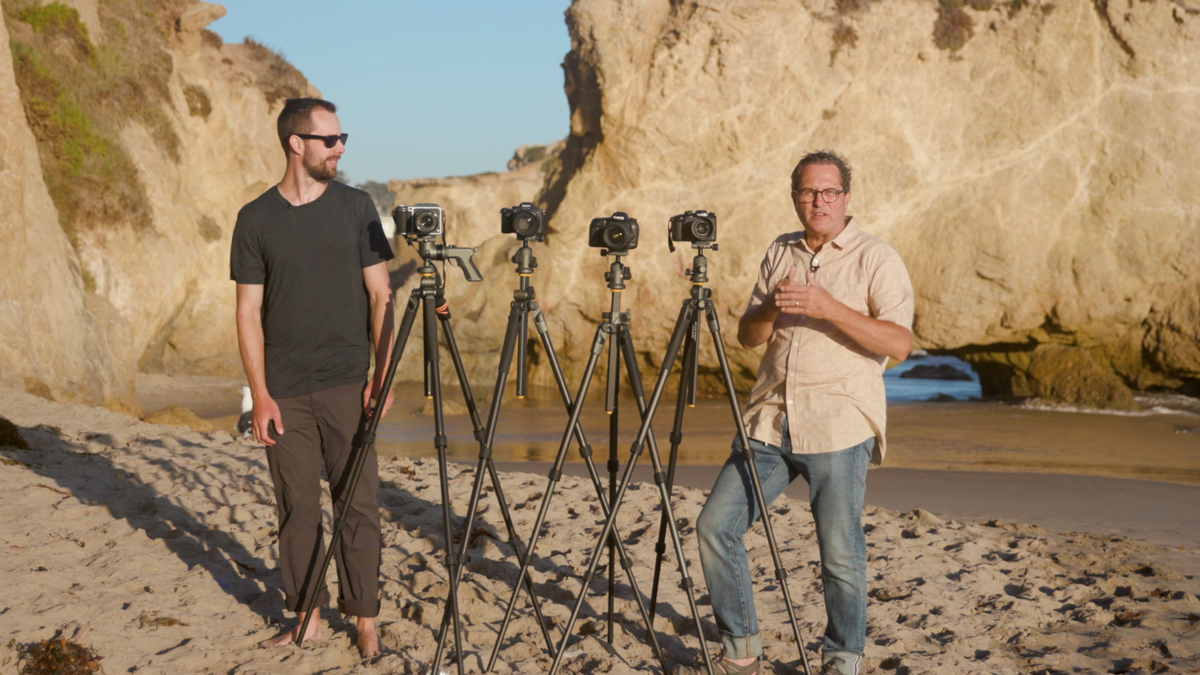 Yes, it does, if you want a high performing camera! I was kind of surprised by the results. Although I wouldn’t recommend a micro 4/3 if you are looking for a high quality performing camera. Initially, I expected that the APS-C sensor would perform better, but it fell short. The full-frame sensor seems to be a sweet spot to be able to give you a really decent image size. I don’t see a huge improvement with the medium format vs. full frame. The quality isn’t good enough on the Hasselblad to make it worth spending more money on not just the camera, but also the lenses.
Yes, it does, if you want a high performing camera! I was kind of surprised by the results. Although I wouldn’t recommend a micro 4/3 if you are looking for a high quality performing camera. Initially, I expected that the APS-C sensor would perform better, but it fell short. The full-frame sensor seems to be a sweet spot to be able to give you a really decent image size. I don’t see a huge improvement with the medium format vs. full frame. The quality isn’t good enough on the Hasselblad to make it worth spending more money on not just the camera, but also the lenses.
Just get out there and keep clickin! If you haven’t checked out our Youtube channel, you can watch our video on this write-up here!
Gear Used:
Panasonic GH5
Amazon: https://amzn.to/2A1qnPm
SONY A7r3
Amazon: https://amzn.to/2O1pVZX
HasselBlad X1D
Amazon: https://amzn.to/2RYgxEJ
Canon 7D Mark II
Amazon: https://amzn.to/2CoiViT
Van Guard Alta Pro 263 Tripods
AMAZON: https://amzn.to/2pXUCRm
SKB iSeries Case
AMAZON: https://amzn.to/2OyEYcZ
